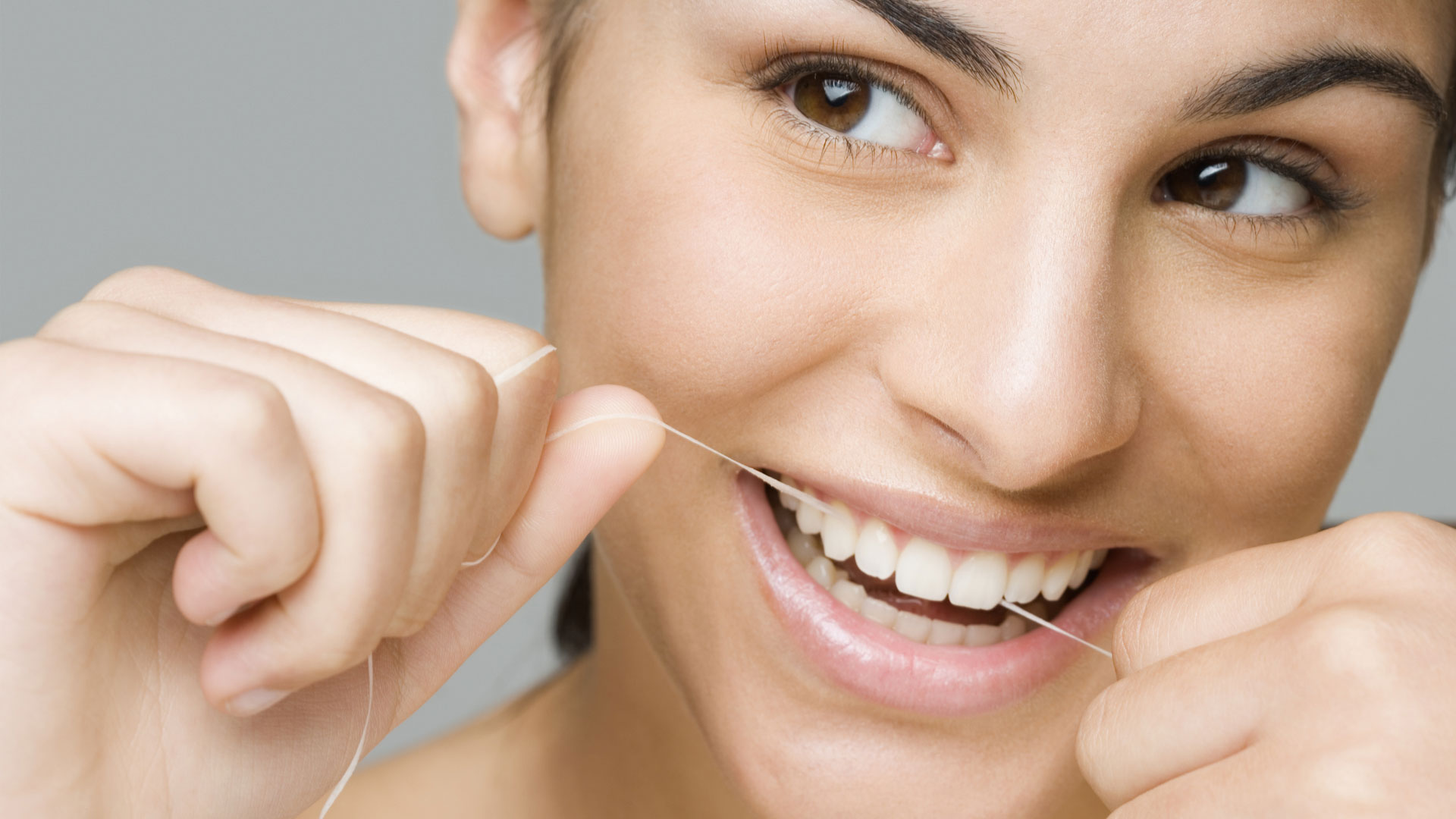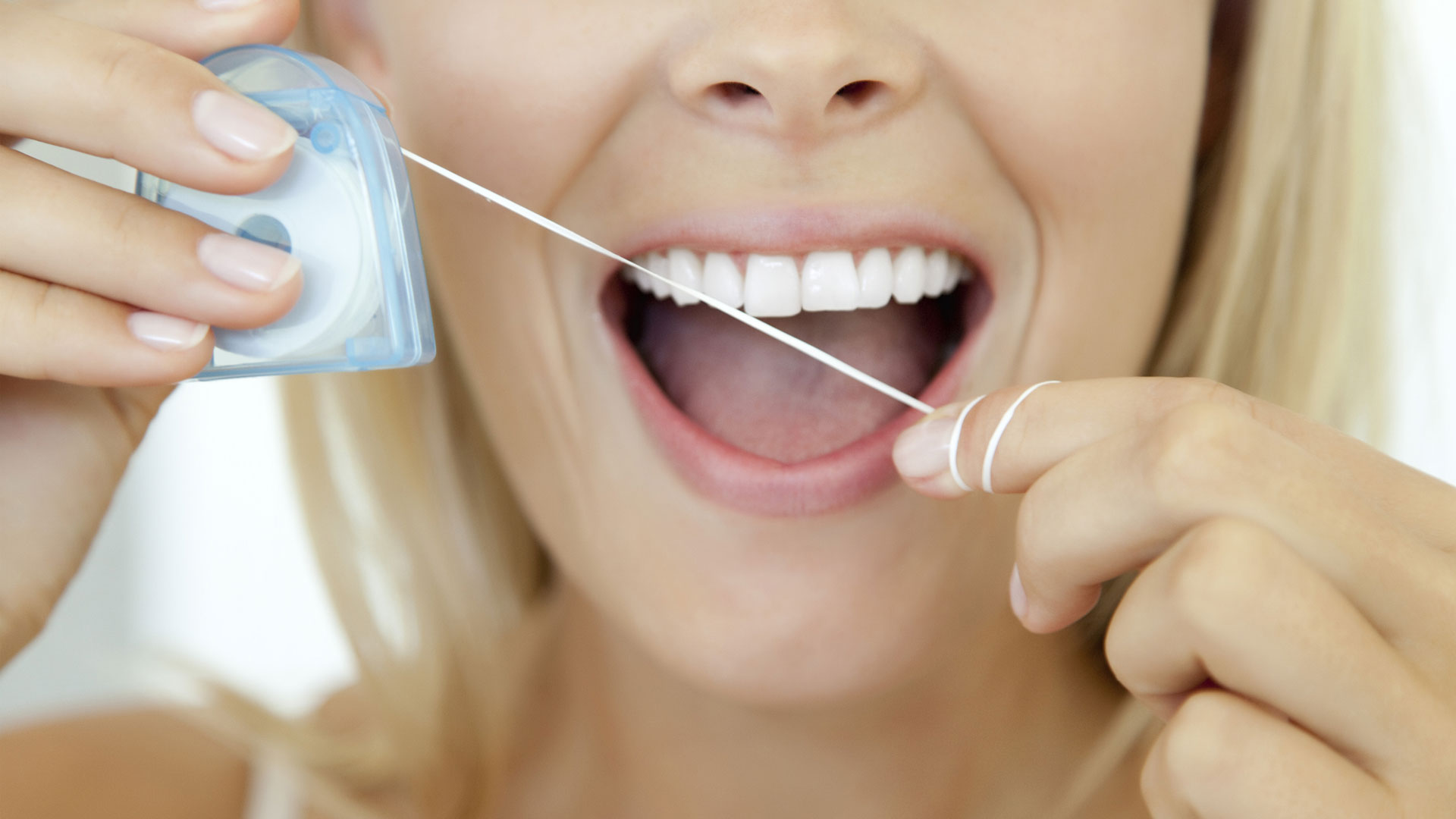How to floss your teeth
We're going to unpack how to floss your teeth with tips from experts and advice on what to avoid for the best results.

Knowing how to floss your teeth is a highly recommended step in people's oral health routines, yet many still avoid doing it. Sometimes it’s because they don't know how to, other times because they're unsure how often they should do it, and some people even experience worrying symptoms such as gum bleeding after flossing!
So it should come as no surprise that there are lots of questions that still surround flossing your teeth. From whether one type of floss is more effective than another to how often you actually should be flossing to achieve optimum oral-health benefits. We've asked dentists Dr. Anjali Rajpal and Dr. Inna Chern to share their advice on how to floss your teeth. Dr. Rajpal has pursued advanced training in general dentistry and the treatment of medically compromised patients, while Dr. Chern is a general dentist with her own practice in New York City, where she focuses on providing dental care in a relaxed and inviting environment.
If you're ready to take your oral hygiene to the next level, you can find great deals in our guides to the best electric toothbrushes and the best electric toothbrushes for kids too.
- Related: Oral B vs Sonicare
What you'll need to floss your teeth
The first step to flossing correctly comes from having the right tools to floss with. "Traditional floss, whether waxed or unwaxed, can be used to mechanically remove plaque from in between teeth," Dr. Chern told Live Science. Dental floss comes in various forms, including scented options and with additional ingredients such as activated charcoal. If you're actively looking to reduce plastic waste in your daily routine, plastic-free options such as floss made from natural fibers packaged in glass or other recyclable materials are available.
Technique
When it comes to flossing, your technique is crucial for reaping the benefits. Dr. Rajpal has broken down the flossing technique she recommends for her patients.

In terms of when to floss, Dr. Rajpal told us, "Contrary to popular thought, I actually believe it makes more sense to floss after brushing, when the bacterial load has been reduced from brushing, leaving less buildup on the floss. I advise my patients that they should brush twice a day and floss at least once a day."
Should you floss every day?
"Yes, once a day is good and more often if there are areas in the mouth where more food accumulates," Dr. Chern advised. For example, if you're wearing braces, you can use orthodontic floss or a water flosser with an orthodontic attachment. Other hard-to-reach spots in your mouth can include implants, crowns, and bridges, according to Clinical Oral Implants Research. Researchers found that flossing is one of the most effective ways to keep those areas clean too.
"The only real way to properly cleanse in between the teeth is with floss, which actually gets between the contact point," Dr. Rajpal explained. As you can imagine, cleaning each and every surface of your teeth is essential to keep your gums healthy, remove any odor-causing plaque, and prevent decay over time. "Flossing helps release food particles and bacteria that are stuck in the contact points between teeth. It can definitely help reduce the chance of developing cavities there and help diminish the development of gum disease. Patients that complain to me of bleeding gums will generally see a reduction in bleeding with an improved flossing regimen."

So, whether you decide to add flossing to your oral care routine in the morning or the evening, adding flossing to the mix at least once a day is important. Don't forget that flossing alone won't prevent tooth decay. In addition to cleaning in between your teeth, you will need to learn how to use an electric toothbrush and a good brushing technique to remove plaque from the other surfaces of your teeth. And you may even want to use mouthwash, too.
- Related: Are teeth naturally yellow?
Common mistakes
Dentists Dr. Chern and Dr. Rajpal explained that many people dislike flossing because their technique is slightly off. This can lead to discomfort and even bleeding from the gums. Here are the most common mistakes they see people make when it comes to flossing:
Being too rough
Dr. Chern told us, "Some people complain of bleeding and pain with flossing, and this usually means they are being a bit too aggressive. Flossing should not hurt and should be a gentle process."
Holding the floss wrongly
"Holding the floss with the wrong fingers which complicates the ability to manipulate the floss, or using too short a piece of floss is another mistake. While you may be able to get away with the wrong technique on the front teeth, it will definitely be a challenge to floss the back teeth with the incorrect technique," Dr. Rajpal explained.
Rushing the process
Another common mistake Dr. Rajpal sees is patients not completing the flossing process. "Patients thinking they can just pop between each contact without wrapping around each tooth and cleaning below the gum," she told us. "I explain to them how important it is to make sure that the surfaces are thoroughly cleaned and that the area just below the gums is gently accessed," she added.
Sign up for the Live Science daily newsletter now
Get the world’s most fascinating discoveries delivered straight to your inbox.
India Bottomley is a health and beauty writer whose work has been published in the likes of Cosmopolitan, Forbes, and Dazed Magazine. A lifelong skincare aficionado, India has been writing research-led pieces on trending skincare, makeup, and cosmetic procedures since 2016. She takes particular interest in the growing connection between tech and beauty, and has had pieces on the topic published in American Healthcare Journal. When not writing she can be found exploring national parks or at the beach chasing sunsets.











